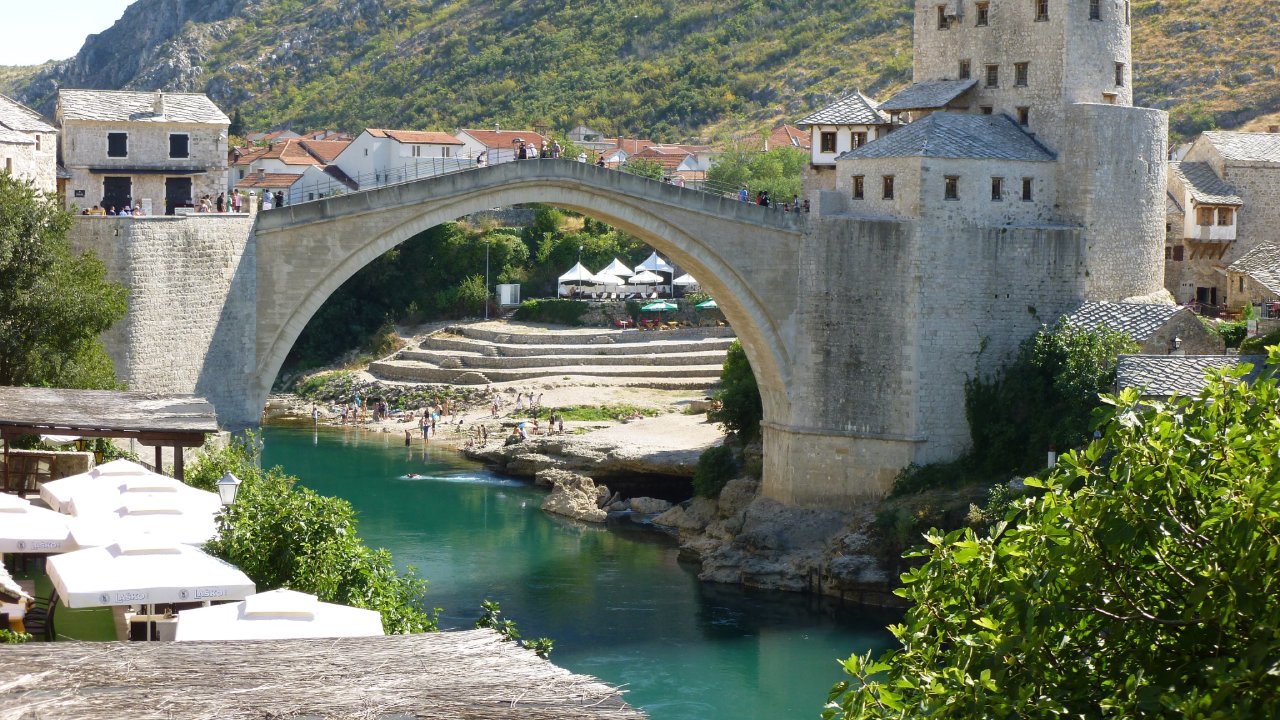
Eine weitere Region, die im Fokus der Mezalim Forschung liegt, ist die über den Südostrand des europäischen Kontinents sich erstreckende Balkanregion, die wegen ihrer geografischen und strategischen Lage über Jahrhunderte hinweg als Objekt machtpolitischer Überlegungen und Eroberungen galt. Im Alltagsleben begegneten sich die unterschiedlichsten Völker, Sprachen, Kulturen und Religionen. Im Zuge des aufkeimenden europäischen Nationalismus, das Ideal von einer nationalen Homogenität und separatistischer Bestrebungen verschiedener Völker der Balkanregion im 19. Jahrhundert fielen Hunderttausende Muslime in Südosteuropa Massakern und ethnischen Säuberungen zum Opfer, wo sie einst die Bevölkerungsmehrheit stellten.
Im Zuge des griechischen Unabhängigkeitskrieges führten die Aufständischen groß angelegte Massaker an muslimischen Bewohnern durch, wie das Blutbad von Tripolitsa 1821 im heutigen Griechenland, bei dem annähernd mehrere Zehntausend Muslime (Türken und Albaner) und Juden Opfer von Metzeleien wurden. Von 1875-1879 musste die muslimische Zivilbevölkerung in Bulgarien und Serbien ihre angestammte Heimat in Richtung Anatolien verlassen.
Durch die Balkankriege spitzte sich die Situation der muslimischen Zivilbevölkerung noch einmal zu, bei dem schätzungsweise über eine halbe Million Menschen getötet und Hunderttausende vertrieben wurden. Die Millionen vertriebener muslimischer Flüchtlinge, die sich in Anatolien niederließen, prägen bis heute das Narrativ der Vertriebenen aus Südosteuropa. Im Zuge des Krieges im ehemaligen Jugoslawien kam es im bosnischen Srebrenica zu einem Massenmord an Muslimen. Der Völkermord von Srebrenica gilt als das schlimmste Kriegsverbrechen seit Ende des Zweiten Weltkriegs, bei dem 8.000 muslimische Männer und Jungen von serbischen Milizen ermordet wurden.
Kontakt
Kemal Bölge
Ressortleiter Balkan
k.boelge@mezalim.org
Fachartikel in englischer und deutscher Sprache
The War of 1877–1878 is remembered through the lens of the tragic experience of refugees (muhajirs) and the suffering of the Muslim civilians linked to the pogroms, emigration and exile. The difficulty of characterising the War stems from many contradictory relations about these events. It is not only related to the motivations of the Bulgarian and Turkish historians, who want to present their national visions of history, but to the source materials as well. In historiography and the sources, Bulgarians have presented Muslims as oppressors and Christians as victims, and Turks vice versa: Muslims are sufferers and Bulgarians are tormentors.
by Krzysztof Popek, Ph.D
The Principality of Bulgaria, the Sublime Porte, and the Muslim Minority (1878–1885)
After the Berlin Congress and separating Muslim communities in Bulgaria from the Ottoman Empire, the Sublime Porte wanted to protect their rights—in line with Pan-Islamism, they were still the sultan’s subjects. In the first years after the creation of the Bulgarian state, Ottomans still hoped that they would take their previous territories back, and doing so required a strong position of the Muslim community there. Not only that, Bulgaria at that time constituted the arena of both sophisticated and vicious diplomatic games, and the Muslim question created a pretext for others to interfere in Bulgarian internal issues, including the Sublime Porte, but also the Great Powers, especially Great Britain, which competed with Russia in the region.
by Krzysztof Popek, Ph.D
One of the main goals of Serbian Uprisings was to banish Muslims from Serbian lands. The Serbian policy towards Muslims was based on the rule “fewer Turks, freer Serbia.” These exact words were said by Prince Milan Obrenović IV, but the idea was earlier picked up by the leaders of the First Serbian Uprising, who aimed to banish all “Turks” from the Belgrad Pashalik, no matter if Turkish-, Albanian- or Slavic-speaking. Until 1813, practically nothing remained of the Muslim population of the Belgrade Pashalik: They either escaped or were killed.
by Krzysztof Popek, Ph.D
“To Get Rid of Turks”. The South-Slavic States and Muslim Remigration in the Turn of 1870s and 1880s
The Great Eastern Crisis (1875–1878) led to migrations on an incomparable scale in the Balkan Peninsula. The Russian-Turkish War of 1877–1878 forced about 350,000 Muslims to leave the Bulgarian lands, which we will understand as the area covering the Principality of Bulgaria and Eastern Rumelia. Sanjak of Niš’s occupation by the Serbian Army resulted in the exodus of 71,000 Muslims. After the situation in the region had stabilized, the refugees (so-called Muhajirs) wanted to get back to their homes in the newly created Principality of Bulgaria, autonomous Eastern Rumelia (first controlled by Russians and later by Bulgarians), and the lands annexed by Serbia.
by Krzysztof Popek, Ph.D
The Emigration of Muslims from the Greek state in the 19th century. An Outline
Although Greece itself does not want to be treated as one of the Balkan countries, the Greek experience of the period of building its own nation-statehood is characteristic of this region. The Kingdom of Greece was created as a result of the separation of lands from the Ottoman Empire, and then annexing other territories that were not only inhabited by the Hellenes, but also by other ethnic and religious groups. Muslims played a key role among them—not only the former masters of these lands, closely related to the system of power of the Ottoman Empire, but also simple farmers or city dwellers. Muslims had settled there during the period of the domination of the Islamic empire; in other cases, their ancestors were local people who had accepted the faith of the rulers. The formation of the Greek state, whose relationship with the Greek nation and the Orthodox Church was unquestionable, was parallel to the disappearance of the Muslim community from the area.
by Krzysztof Popek, Ph.D
One of the most enduring after-effects of the Ottoman rule in the Balkans was the formation of Muslim communities there – the biggest ones still live in Bosnia-Hercegovina, Albania, Bulgaria, and North Macedonia. The question of their origin has been causing powerful emotions – the discussion about their ethnogenesis played an important role in the process of the formation of the nations and proving the communities’ rights to the territories they inhabited. In this context, Mary Neuburger writes about the blood mania which rules in the Balkans. Self-identification, language and faith are treated as secondary to the conviction about having common ancestors and more or less abstract theories about the national origin. It is no different in the case of Bulgaria and the Muslims who lived on that territory. Until the 19th century, their ethnogenesis was the subject of many theories and discussions.
by Krzysztof Popek, Ph.D
Multilingual or Monolingual? The Minority Languages in Bulgaria after 1878
At the end of the 19th century, the Bulgarian lands were not ethnically homogenous. In 1887, about 73.75% (2 326 250) inhabitants pointed out Bulgarian as their native language, 19.25% (607 331) – Turkish, 1.85% (58 326) – Greek, 0.75% (23 541) – “Jewish” (Ladino), 1.59% (50 291) – Roma. Turks lived mostly in the North-Eastern parts of Bulgarian lands, Greeks were concentrated in the Black Sea’s coast and in selected cities as Plovdiv or Stanimaka. The other minorities lived in the smaller and irregularly located communities. In the first years after gaining the independence in 1878, the territory was divided into the two parts: the Principality of Bulgaria (a Turkish vassal and a Russian protectorate) and Eastern Rumelia (an autonomous province of the Ottoman Empire). They were united in 1885 and the structures of the Principality were transferred to Eastern Rumelia.
by Krzysztof Popek, Ph.D
“To Cut Down the Forest of Minarets”: The Transformation of Bulgarian Cities After 1878
The period in Bulgarian history after the Liberation and the creation of the modern state in 1878 was linked to the ideas of Europeanisation and de-Ottomanisation. The Bulgarians tried to sever the ties with Eastern and Ottoman heritage and to become a part of the Western world. That concept had an important influence on Bulgarian cities: not only on their demographical shape, which was the effect of an emigration of Muslims, but on the architecture as well.
by Krzysztof Popek, Ph.D
Muslim Emigration from the Balkan Peninsula in the 19th Century: A Historical Outline
The path to independence for Wallachia and Moldova (the later Romania) and Montenegro was longer and gradual. The events connected with the end of Turkish rule in the region led to large migrations, which, in the history of Southeastern Europe, can be compared only to the movements during the collapse of the Medieval Balkan states and the Ottoman conquest in the 13th–15th century. An increase in human mobility in the 19th century was noticed primarily among Muslims. The German historian Wolfgang Höpken noted that the situation in 19th century Balkans can be summarized in the simple words: “Without a doubt, the Turks are leaving and the Christians are coming”. Between 1821 and 1922 about 5 million Muslims emigrated from the Balkan Peninsula and the coast of the Black Sea, in 1878–1913 1,7–2 million people left European Turkey.
by Krzysztof Popek, Ph.D
De-Ottomanisation of Land. Muslim Migrations and Ownership in the Bulgarian Countryside after 1878
Land was of crucial importance to the Bulgarian society, which until the mid-20th century primarily inhabited rural areas, and was mainly occupied with livestock rearing and farming. When the Russo-Turkish War (1877–1878) broke out, which led to the establishment of the modern Bulgarian state, as much as 70 per cent of agricultural land was owned by Muslims, who made up ca. 50 per cent of the population of these areas. They included both beys – owners of large farms (so-called chiftliks and gospodarluks) – and medium and small peasants. The turn of the 19th and 20th c. brought about deep changes in the Bulgarian ownership structure: what the Russians labelled the Agrarian Revolution, related to all processes of land changing hands from Muslim to Bulgarian ones.
by Krzysztof Popek, Ph.D
The year 1878 was crucial for the history of the Bulgarian lands. The collapse of the Ottoman rule created new political and social circumstances for Bulgarians, the other ethnoreligious groups as well. The second biggest community of the Bulgarian lands was Muslims. The changes were not only linked to decreasing of their number, mostly because of the migration processes (in 1881, 26% of the country’s population was Muslim, in 1910 – 14%), also the Islamic community’s social structure was deeply modified. Without the state administration, which was strictly connected with the Islamic religious organization, the functioning of the Muslim elite faced a completely new reality.
by Krzysztof Popek, Ph.D
